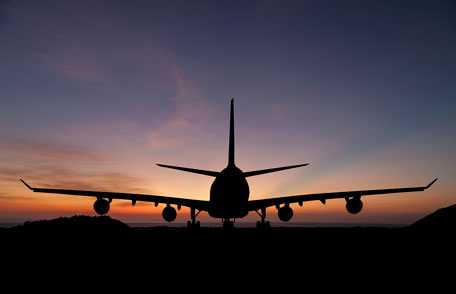Staying Healthy on a Long-Distance Flight
 Planning a trip abroad? Whether traveling for business, to study, or on a much-needed vacation, this information can make your long flight more comfortable and healthier.
Planning a trip abroad? Whether traveling for business, to study, or on a much-needed vacation, this information can make your long flight more comfortable and healthier.
A long-distance flight is a nonstop flight lasting 6 or more hours. More than 300 million people travel on long-distance flights each year.
Risks for Long-Distance Travelers
Long-distance travelers are at risk for deep vein thrombosis (DVT), health issues in the aircraft cabin environment, or jet lag at the destination.
DVT
DVT occurs when a blood clot forms in a large vein, typically in the leg. Sometimes a part of the blood clot can break off and travel to the lungs, causing a pulmonary embolism, which can be fatal. Long-distance travelers are at increased risk for DVT because of limited movement on the flight for an extended period of time. You are more likely to develop DVT if you have additional risk factors. To help prevent DVT:
- Walk around the plane occasionally to increase blood flow and exercise your legs.
- Stretch and exercise your calf muscles while sitting.
- Choose an aisle seat—if you have the option—to make it easier to get up and walk around.
- Talk to your doctor about wearing compression stockings or taking medicine before departure if you have additional risk factors for DVT.

Ready for takeoff.

Flying high!
Aircraft Cabin Environment
The aircraft cabin environment is affected by reduced air pressure, low humidity, low-frequency vibration, and constant background noise. You may wish to pack eye drops, lip balm, and lotion in your carry-on luggage to ease the discomfort caused by low humidity. Stay hydrated by drinking plenty of nonalcoholic beverages. Chewing gum can help with the change in air pressure on takeoff and landing, and earplugs can help block cabin noise.
You may also be concerned about airborne germs in the enclosed cabin environment—from that guy in 14C who has been coughing since takeoff—but recirculated cabin air is filtered through HEPA (high-efficiency particulate air) filters. These effectively remove most bacteria and viruses from the air, limiting their spread through the cabin. Practice good handwashing and cover your mouth when coughing or sneezing to further prevent the spread of disease.
Jet Lag
Travelers on long-distance flights often experience jet lag, particularly flying east or west across multiple time zones. Jet lag is a temporary sleep disorder that occurs when the body’s internal “clock” takes a while to adjust to the time at the destination. It can affect your mood, concentration, and mental and physical performance. It is generally not serious but can cause problems if you have critical business or vacation activities planned shortly after arrival. If time allows, try to adjust your sleeping schedule for a few days before you leave on your trip, and plan a low-key first day after you arrive (see Jet Lag for other tips).
Many of the world’s most fascinating destinations can only be reached on a long-distance flight. Sitting on a plane for so long can be intimidating, but you can take steps to improve your comfort and safety. Best wishes for safe and healthy travels!
- Page last reviewed: October 17, 2016
- Page last updated: October 17, 2016
- Content source:
- National Center for Emerging and Zoonotic Infectious Diseases, Division of Global Migration and Quarantine
- Page maintained by: Office of the Associate Director for Communication, Digital Media Branch, Division of Public Affairs




 ShareCompartir
ShareCompartir